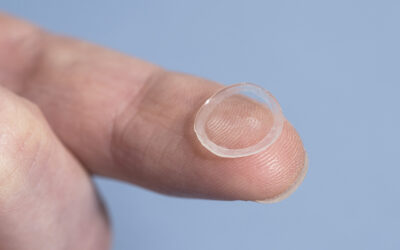Biocomputing uses biomolecules to process information, but approaches have so far relied on the inclusion of genetically modified cells or chemical additives to carry out a desired task. In a recent article featured in Advanced Biosystems, Zorlutuna and co-workers from the University of Notre Dame, Indiana, are the first to use muscle cells as diode components for processing information in biological systems. The diode is composed exclusively of two different cell groups: excitable cardiac muscle cells (CMs) on one side (left side in image) and cardiac fibroblasts (CFs) on the other side (right side in image).

The researchers used a self-forming micropatterning approach to create a confined rectangular network of cells that operates on external electrical input. This applied stimulation gives rise to a purely unidirectional signal that propagates through the CMs and attenuates through the CFs. Absolute unidirectionality is a key characteristic of an ideal diode, and patterned neural cell networks developed previously were unable to meet this criterion efficiently. This new living muscle cell circuitry is a promising technology for communicating information across the human–electronics interface.

















